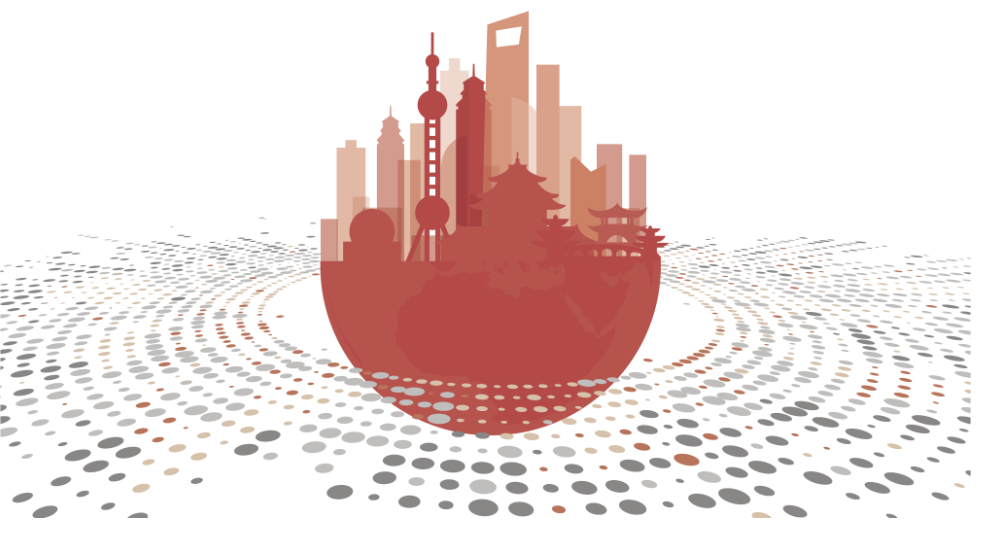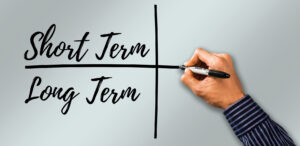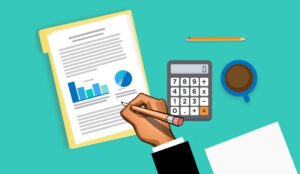ABN Amro har lavet en omfattende analyse af Kinas håndtering af coronakrisen og genåbningen af samfundet. Der er meget, vi kan lære i Europa, men den hurtige kinesiske håndtering og genåbning hænger sammen med et autoritært styre og et samfund, hvor samfundsdisciplinen er langt mere udpræget end i Europa eller USA. Banken ser mere positivt på vækstudsigterne end de fleste. Venter en vækst i år på 3 pct.
Uddrag fra ABN Amro:
China Watch – Restart and rebound
- China booked progress in getting Covid-19 under control …
- … helped by specific policies, experience and community discipline
- This paved the way for a guided reopening of the economy since February
- The rebound is led by industry, while services take more time to recover
200429-China-Watch.pdf (234 KB)
According to official data, China booked progress in getting Covid-19 under control
In December 2019, the novel coronavirus (Covid-19) broke out in Wuhan, the capital of Hubei province. The number of confirmed cases rose sharply in early 2020, with a methodological revision mid-February leading to 15000 additional cases. After the authorities took a range of strict emergency measures, new confirmed cases have fallen sharply.
More recently, the number of new cases has risen again mainly due to cases imported from abroad. On 16 April, the highest number of new cases since 1 March was reported (351). The death toll has remained relatively low, although it was revised upwards by around 1300 mid-April. Meanwhile, the number of recoveries and releases from hospital is getting closer and closer to the number of confirmed cases. We should add that we do not know how reliable the Chinese Covid-19 statistics are, but that will be true for a lot of countries and partly this reflects differences in testing approaches.
What is specific about the Chinese Covid-19 approach?
International criticism on China’s transparency and attitude during the pandemic episode has risen recently. Based on official data, it seems that the measures taken by the Chinese government have worked in getting the pandemic und control relatively quickly, thereby providing the room for the gradual reopening of the economy since late February.
Drawing lessons from China seems useful, but we should be aware that some of China’s policies in dealing with Covid-19 would not be easy to follow by Western democracies. The political system is autocratic and the Chinese people are more inclined to obey to what the government tells them to do than in Europe and the US. Moreover, in China collective interests tend to be given more weight than the rights of individuals. That also explains why privacy laws are not comparable to Western standards, providing room to exploit China’s highly advanced IT-infrastructure in the battle against Covid-19.
In addition, community discipline is widely perceived as being the crucial factor in controlling the outbreak. People in China (and in other parts of Asia) are more experienced than people in Europe or the US with pandemics (e.g. H5N1 Avian flu in 1996, SARS in 2002-03), which may also explain why they are more disciplined in self-quarantining, wearing face masks and in adopting other measures to stop the spread of the virus.
The experience with virus outbreaks may also explain why China’s starting position (in terms of stockpiles of for instance medical appliances, face masks or IC capacity) has been stronger than many Western countries. The authorities have also been fast and decisive in investing in health systems, medical gear and hospitals where needed and in implementing strict quarantine, testing and track & trace policies.
What measures did the government take initially to stem Covid-19?
Covid-19 related measures have been initiated by the central government, but the majority of the measures were taken by local governments (provinces, cities, districts, counties) and these varied according to the local health situation. Beijing initially decided to extend the Lunar New Year holiday from Thursday 30 January until Sunday 2 February. Many local governments extended the delay until 9 February to discourage people from traveling back from their home towns (where they typically go during the New Year holiday) to their work places. The national and local governments also have delayed the opening of schools and colleges around the country.
The lockdowns were most lengthy and severe in Hubei province (±4% of GDP/population and 10% of car production), where Covid-19 originated and the most infections and deaths have been recorded. The lockdown started on 23 January and lasted until 25 March (two months) for most Hubei cities and even until 8 April (2.5 month) for Wuhan. The Hubei/Wuhan lockdowns were characterised by the suspension of all public transport and strict control of movement in and out of the city. Moreover, all ‘non-essential companies’ including manufacturing plants were closed down.
This lockdown also set the precedent for similar measures in other cities inside and outside Hubei. Many cities, districts and countries decided to take over Hubei’s strict outdoor mobility restrictions, permitting only one person from each household to go outside for provisions once every two days except for medical reasons or to work at essential shops or pharmacies. Elsewhere in China all kinds of tailor-made public health restrictions were in place as well.
Measures taken to guide the restart of China Inc.
In late February, there was growing confirmation that the spread of Covid-19 was more or less under control, as new confirmed cases dropped from several thousands per day in the first half of February to several hundreds at the end of the month. As a result, Beijing became more vocal about the need to restart the economy. Central and local governments started urging companies to resume production, while loosening criteria for factories to resume operations and easing mobility restrictions.
However, the starting up of production facilities was a gradual process, as firms were faced with a lack of staff due to mobility restrictions, with specific health regulations and with a lack of supply of intermediate products as supply chains had to been rebuilt.
To avoid a serious second wave of infections, the restart was subject to all kinds of safety precautions. While social life is gradually normalising, there is still strict monitoring and testing and social distancing in public places (schools, restaurants, bars and shops). There is also widespread use of face masks, protective equipment and extensive hygiene measures. Digital solutions to track and trace infections have been introduced at a city or provincial level. Each individual has an assigned Green, Amber or Red status, based on known health status and travel history. Firms have to practice ‘social distancing’ and promote working from home if applicable, there has been a gradual scaling up of activity. Mass congregations are still avoided and discouraged.
More recently, concerns about imported cases have triggered tighter restrictions on international travel. An entry ban on foreigners is still in place and a strict quarantine applies for Chinese nationals returning from overseas. Domestic travel bans have been eased, although some quarantine rules were tightened after the recent pick-up in new infections.
The ‘rebound after the restart’ is led by the industrial sector, …
March data confirm that the Chinese economy is gradually recovering from the deep Covid-19 induced trough in February. The rebound has been the strongest in the industrial sector. In mid-April, around 99% of large industrial firms has resumed operations. For SMEs, the resumption rate is around 85%. Still, average daily thermal coal consumption for power generation is at around 90% of the average level over the past three years.
Annual growth of industrial production was still negative in March, but at -1.1% yoy it was far less so than in January/February combined (-13.5%). Car production increased fivefold in March compared to February, but remained sharply negative in annual terms (-40%). For more details also see our Short Insight, China’s first annual contraction in decades, published on 17 April. There are also signs that the construction sector is undergoing a relatively rapid recovery, helped by policy stimulus. This is leading to a stabilisation of metal prices and improving confidence of end-users in China’s metal markets.
… but the recovery in the hard-hit services sector is less pronounced
Services (particularly transport, catering and entertainment) have been the epicentre of China’s Covid-19 shock. There are no overall numbers for resumption rates in services, but various numbers indicate that the services sector is still operating clearly below pre-corona levels. That is particularly true for consumer-related services, while production-related services are doing better. The road congestion index in the four tier-one cities (Beijing, Shanghai, Guangzhou, Shenzhen) is more or less back to pre-corona levels.
However, nationwide passenger transportation data (by road, railway, air and waterway) remain at 40% of 2019 levels. Catering-related services are still way below normal capacity. In mid-April, around 50% of catering enterprises had reopened. In March, catering-related spending was down 46% yoy, versus 16% for overall retail sales.
Domestic demand still weak but gradually recovering, …
Notwithstanding the pick-up in China’s industrial sectors, serious challenges remain. Domestic demand has yet to recover, although there are some tentative signs of stabilisation. In March, annual retail sales growth was still in contraction territory at -15.8% yoy (Jan/Feb: -20.5), illustrating that private consumption is still well below pre-corona levels. That partly reflects a rise in unemployment (the official rate has risen from around 5% to 6%) and a drop in consumer confidence, but also behavioural changes (consumers have become more cautious and restrict themselves despite the lifting of official restrictions) and social distancing measures.
Fixed investment (ex rural) was also still sharply down in annual terms, at -16.1% yoy ytd. We expect domestic demand to gradually recover in Q2, helped by policy stimulus. The government is stepping up monetary and fiscal easing, while refraining from Western-style big bazooka programmes as that runs counter to their longer-term goal of keeping a lid on overall leverage.
… while external demand is bound to fall sharply in Q2
China’s foreign trade data for March were not particularly good, but clearly better than the numbers for January-February combined (when lockdowns and other restrictions weighed heavily on activity). Exports (in dollar terms) contracted by 6.6% yoy versus -17.2% in Jan/Feb. Imports contracted by only 0.9% yoy versus -4% in Jan/Feb. It is likely that the improvement of the foreign trade data in March stems from some post-lockdown pent-up flows in foreign trade. That effect may well be less visible in April.
Moreover, we expect that headwinds to Chinese exports will rise sharply in Q2, as the spread of Covid-19 has caused lockdowns around the globe that will lead to a collapse in global GDP and trade growth. That will weigh heavily on external demand for Chinese products and will create a negative feedback loop on export-oriented industrial activity again. That said, China’s economy is now much less export oriented compared to the first decade of this century.
















